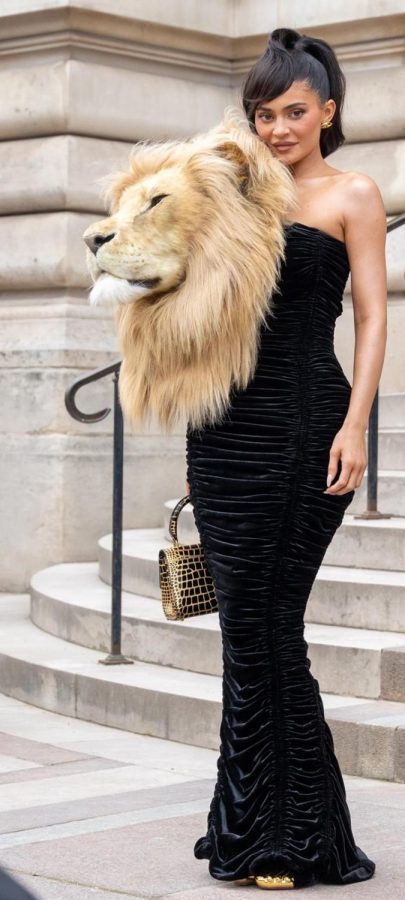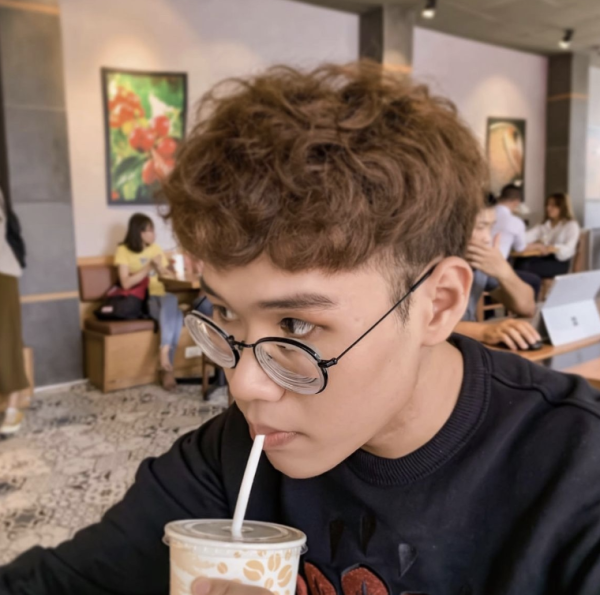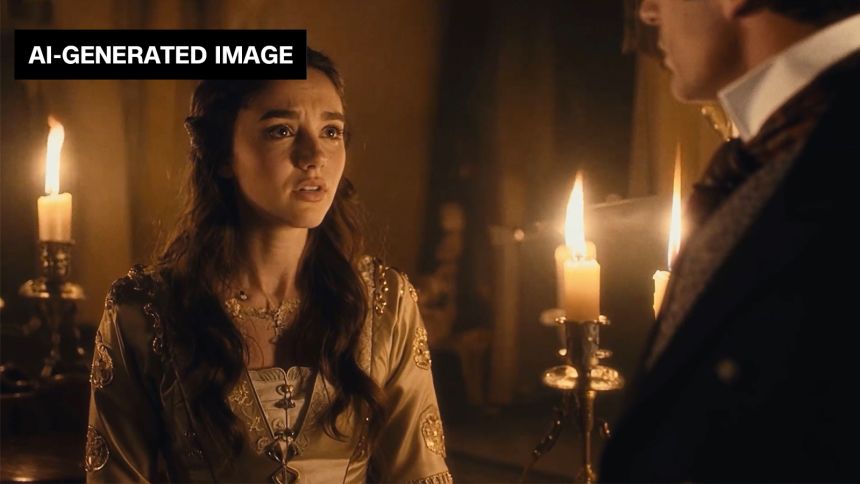The lion dress: when realism sparks real outrage.
February 3, 2023
When fashion collides with reality—there is only one winner, as Schiaparelli’s Daniel Roseberry found out on the first day of Paris Haute Couture week.
Under the flashlight of photographers and influencers, Kylie Jenner strokes the lion’s mane under her chin with one hand, looking straight at the cameras with a feline smile while approaching the front row of the Schiaparelli Haute Couture show.
It was a shocking moment for the fashion world.
Designed by Daniel Roseberry, Jenner’s dress is part of the Spring Summer 2023 Haute Couture collection that is about to be presented on the runway. Neither Jenner nor Roseberry knew they had stirred a controversial fashion drama.
Inspired by Dante’s Divine Comedy, the collection features three looks with a life-sized animal head attached to the garment.
The hand-painted wool and silk bustier dress, modeled by Shalom Harlow shows a large snow leopard head on the front.
Model Irina Shayk wore the same dress as Kyle Jenner while Naomi Campbell walked down the runway wearing a black oversized faux-fur coat with a wolf head on her shoulder.
The internet did not take long to react to the animal-inspired couture. Just a few minutes after the show, fashion followers quickly took over Twitter and Instagram to voice their opinions on these apex-predator-inspired looks.
The controversy spread rapidly, with some mistaking the hyper realistic design for actual taxidermy, while others criticized Jenner and Schiaparelli for promoting trophy hunting and animal poaching.
On the same morning, the Italian-rooted fashion house confirmed that none of the looks were made of actual dead animals. “The leopard, the lion, and the she-wolf, representing lust, pride, and avarice in Dante’s iconic allegory, in hand-sculpted foam, resin, wool, and silk faux-fur. The heads were hand-painted to look as life-like as possible. NO ANIMALS WERE HARMED IN MAKING THIS LOOK,” Schiaparelli states in their Instagram caption, highlighting the artificial nature of the garments.
Despite the house’s confirmation, some continue to criticize the ideology of using animals as decoration, regardless of whether they are real or just replicas. “The whole concept of this is repulsive,” an Instagram user said.
“Something fake can still have a very real influence and send an extremely grotesque and disturbing message.”
While major fashion magazine like Vogue states that the controversy is a shame, some fashion journalists take this as an inevitable effect generated by the collision between provocative marketing and shifting consumer value.
“The designs were clearly calculated to provoke a reaction during a Paris couture week noisy with competitors vying for attention,” said Rachel Deeley, fashion writer of the Business of Fashion.
The three show-stealing looks could be offensive to many people, but not to PETA. The animal rights activist group surprisingly praised the collection’s faux-fur adornments, craftsmanship and ingenuity.
Nevertheless, it’s worth remembering that couture week is an annual reminder that fashion does not equal practicality.
For designers, it’s a chance to establish a signature aesthetic, to push the boundaries of craftsmanship and technique. For celebrities, it’s a precious opportunity to let their creativity run wild, to embody the craziest ideas (like the way Doja Cat covers herself in red makeup and 30,000 Swarovski crystals).
Elsa Schiaparelli, the founder of the house once said: “In difficult times, fashion is always outrageous”. Despite all the online rumblings, we have witnessed the outrageous aspect of fashion in the most creative way.






